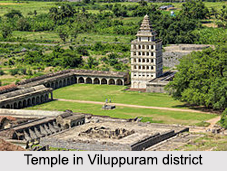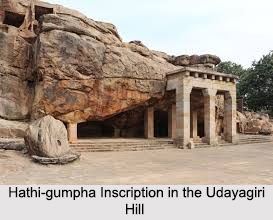 Pre Historic Age of Tamil Nadu involves the Lower Paleolithic settlements that existed in the Tamil Nadu region has been estimated to span the period from about 1,510,000 BC until around 3000 BCE. The human civilization in this era lived close to river valleys with sparse forest cover or in grassland environments. The population density was very low and so far only two localities of this lower Palaeolithic culture have been found in South India.
Pre Historic Age of Tamil Nadu involves the Lower Paleolithic settlements that existed in the Tamil Nadu region has been estimated to span the period from about 1,510,000 BC until around 3000 BCE. The human civilization in this era lived close to river valleys with sparse forest cover or in grassland environments. The population density was very low and so far only two localities of this lower Palaeolithic culture have been found in South India.
Archaeological Evidences from Tamil Nadu
The archaeological research has uncovered evidence of fossil remains of animals and primitive stone implements around the northern Tamil Nadu that could be dated to belong to around 3,000,000 BC. Humans in South India, belonging to the species of Homo erectus, lived in this primitive old stone age for quite a long time, using only crude implements such as hand axes and choppers and subsisting as hunter-gatherers. A discovery of a rare fossilized baby brain in Viluppuram district, by a team of archeologists was reported in April 2003 and it is estimated to be about 187,000 years - 200,000 years or older.
Tamil Nadu in Neolithic Age
 In Tamil Nadu, the Neolithic period had its advent around 2500 BC. The humans of the Neolithic period made their stone tools in finer shapes by grinding and polishing. A Neolithic axe head with ancient writing on it has been found in Tamil Nadu. The Neolithic humans lived mostly on small flat hills or on the foothills in small, more or less permanent settlements but for periodical migration for grazing purposes. They gave the dead proper burials within urns or pits. They were also starting to use copper for making certain tools or weapons.
In Tamil Nadu, the Neolithic period had its advent around 2500 BC. The humans of the Neolithic period made their stone tools in finer shapes by grinding and polishing. A Neolithic axe head with ancient writing on it has been found in Tamil Nadu. The Neolithic humans lived mostly on small flat hills or on the foothills in small, more or less permanent settlements but for periodical migration for grazing purposes. They gave the dead proper burials within urns or pits. They were also starting to use copper for making certain tools or weapons.
Iron Age of Tamil Nadu
During the Iron Age, the human civilization in Tamil Nadu started using iron for making tools and weapons. The Iron Age culture in peninsular India is marked by Megalithic burial sites, which are found in several hundreds of places.
Evidences of Megalithic Age
The earliest evidence of the presence of the megalithic urn burials are those dating from around 1000 BC, which have been discovered at various places in Tamil Nadu, notably at Adichanallur, 24 km from Tirunelveli, where archaeologists from the Archaeological Survey of India unearthed 157 urns, including 15 containing human skulls, skeletons and bones, plus husks, grains of rice, charred rice and Neolithic Celts. One urn has writing inside, which, according to archaeologists from the Archaeological Survey of India, resembles early Tamil-Brahmi script, confirming it of the Neolithic period 2800 years ago.
History of Tamil Nadu in Hatigumpha Inscriptions
Hatigumpha Inscriptions shows the clear history of Tamil Nadu from political and social side. The Hathigumpha inscription dated 150 BC depicts the good and proper administrative system in Tamil Nadu. The earliest epigraphical evidence in the Tamil country is that of the Pandya king, Kadungon who displaced the Kalabhra Dynasty from the Pandya Dynasty extension.



















